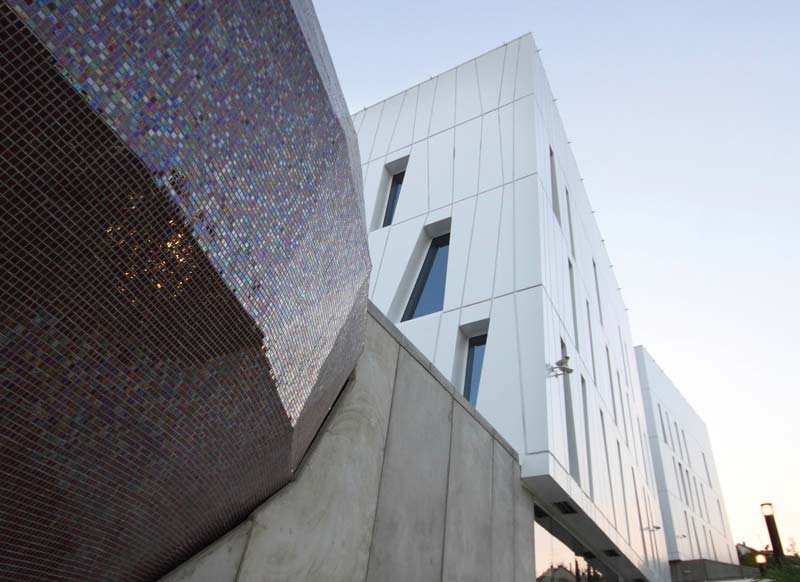Smart Building and Infrastructure Development
IN BRIEF
- Today, solutions exist for new buildings to be built with 60% less energy use and CO2 emissions over the life cycle than conventional buildings constructed 20 years ago.
- New buildings can be built with deconstruction rather than demolition in mind.
- Parts of buildings could be re-used in their entirety or as modular elements.
Service life refers to the period of time a building can be expected to withstand normal conditions, if properly maintained. The expected service life of a building is usually relatively long, with many 100-year-old buildings still fully functional. But as needs evolve, infrastructure and buildings will often be replaced before the end of their lifetime.
For example, today thermal efficiency of buildings is increasingly key, as is recyclability at the end of the building life. In both cases, concrete has a major role to play and can reduce the energy footprint over the life of a building by 2/3. It can also be crushed and recycled as an aggregate or material for use in road construction at the end of the building’s life or as a raw material in cement production.
Thermal Efficiency:
Examples exist today of buildings which produce more energy that they consume through maximising the benefits from concrete’s thermal inertia assisted by sealing of buildings, natural ventilation, concrete louvers and using the building as a platform for renewable energy. Conventional buildings consume 200kWh/m2/year. By contrast, concrete technology, available today, enables buildings to be built that use 50kWh/m2/year.
Recycling and Deconstruction:
There is an increasing trend to supplement conventional concrete recycling after demolition with a second model, whereby entire concrete elements are reused in their original form. A common technique is to leave the concrete structure in place, while modernising the inside space or façade/curtain wall of the building. This approach conserves natural resources and prevents the environmental impact from waste disposal and extraction, manufacturing and transportation of virgin materials. This approach is based on an original flexible building design which permits adaptation and change of use throughout the life of the building.
Another trend looks at deconstruction rather than demolition. In this case, complete building elements like walls or panels are reused in a different construction. A good example of successful reuse is the Mehrow Residence near Berlin. This new family housing concept reused complete walls, floor plates and ceilings from a demolished 11-storey tower block. The only significant energy cost arose from transportation of the five-tonne panels and use of a portable crane to lift them into position on site. Reuse of precast panels, completely free of charge, avoided the environmental impact associated with disposal and saved on material costs. Indeed, a recycled concrete panel house could potentially use three times less energy and can be approximately 30-40% cheaper than a similar house built on a new structural frame with virgin materials.
A relatively novel form of construction is based on concrete structures made of precast units using bolts or welded joints that are designed to be dismantled with little or no damage. In the Netherlands, where demolition is well organised and recovery levels are extremely high, special construction systems have been developed so that entire buildings can be dismantled and delivered to another site.
POLICY RECOMMENDATIONS
- Develop a norm for thermal inertia, which could be included in building codes to ensure that buildings take full advantage of this characteristic.
- Encourage life cycle energy use calculations in the selection of the most beneficial building materials for new structures.
- Consider rebuilding as an alternative to refurbishing, where applicable.

